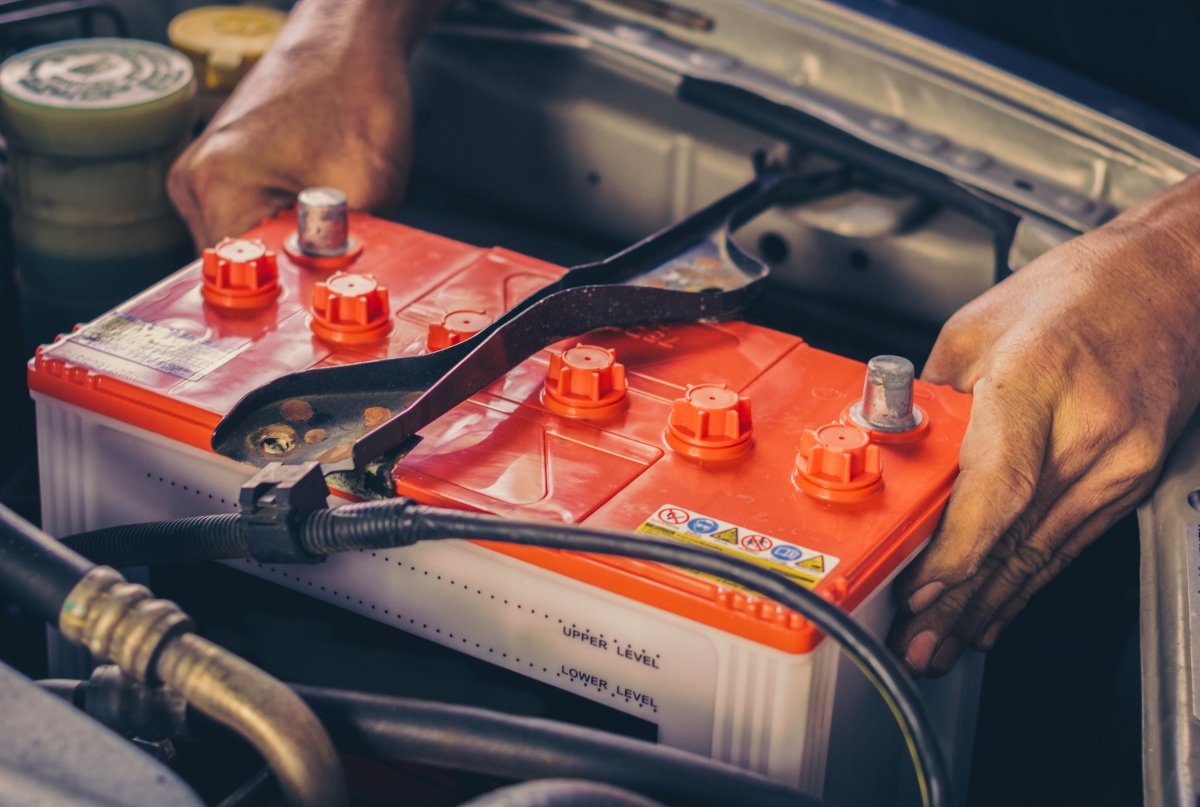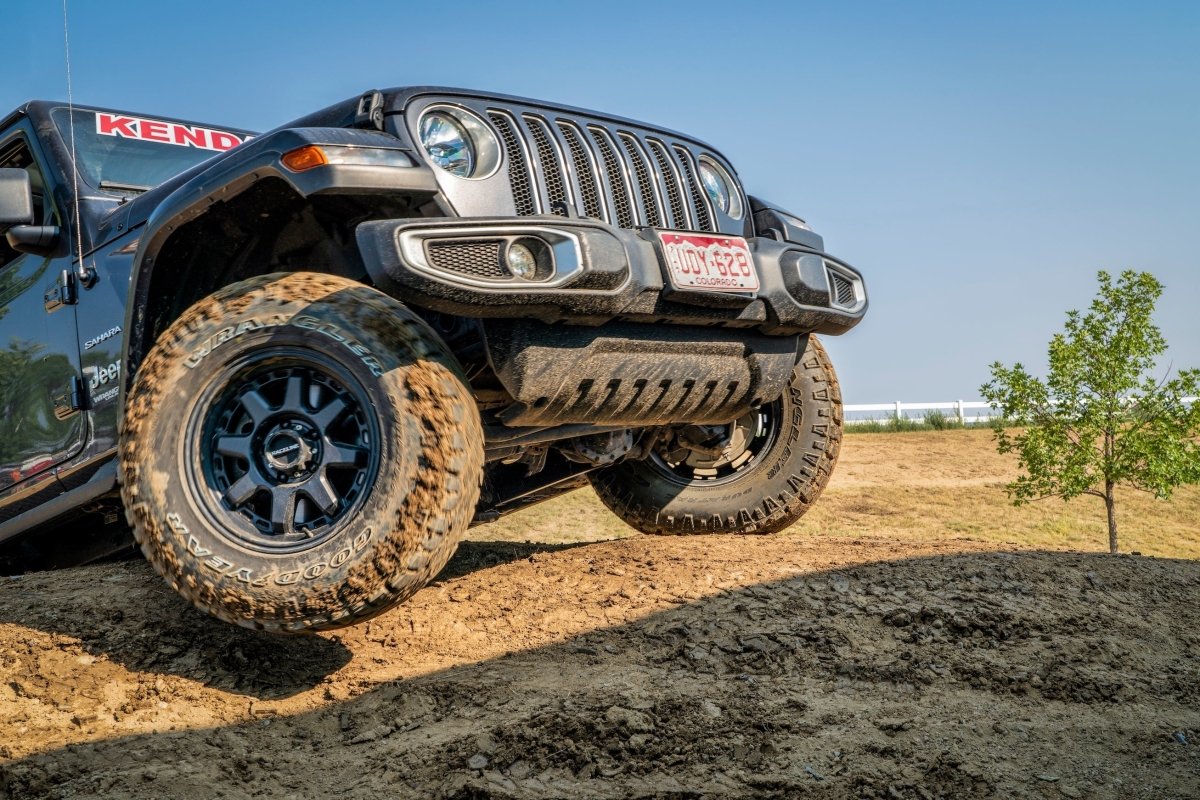If you use your 4x4 with a winch, portable fridge, camp lights, radio, or USB outlets, your vehicle's electrical system may not support an extra power drain. A dual battery system ensures extra power without draining the vehicle's battery.
People use a dual battery system to provide extra power for accessories and ensure a reliable power source in off-grid situations. Campers, four-wheelers, and those who need to power appliances while the vehicle is off use this system mostly. A dual-battery setup also provides a backup battery in the event of a stalled engine.
A dual-battery system provides extra power for your accessories without draining the main battery. This is how campers enjoy their adventures and unwind in the woods or wilderness. This article will help you get your vehicle a dual battery setup.
What is a Dual Battery Setup?
A dual-battery system is a setup where two batteries are connected to a vehicle's alternator and work together to provide power. This is ideal for those who camp often and need a reliable power source. It is excellent for those who partake in four-wheeling, as it provides a backup battery in the event of a stalled engine.
The isolator in the system will automatically prevent the main battery from being discharged when the vehicle is off and will open to allow power to flow into both batteries when the engine is on. The benefits of a dual battery system include no necessary maintenance, resistance to vibration, and the ability to mount batteries in various positions.

How Does It Work?
To understand how to set up a dual battery system, you must know how it works.
A dual battery system is a great way to increase the power available in your vehicle. It connects two batteries in series, allowing them to draw from the same power source.
The first battery, the primary or starting battery, is typically used to start the engine and provide power for regular operation. The second battery is then connected to the primary battery and is used to power the accessories.
You can use the second battery, for instance, to run your camp lights, charge your laptop and cell phone, and power a small refrigerator. By having a second source of electricity, you can prevent accidentally overusing your starter battery and ending up stranded.
In many systems, the two battery banks can be momentarily "paralleled" to help start the car if the starting battery is accidentally discharged.
This is made possible by using an isolator. An isolator separates your starter battery from your secondary battery so that only one battery generates power. Each battery should work independently to prevent your starter battery from running down and rendering your four-wheeler incapable of starting. You can charge and use both batteries independently with a suitable battery isolator.
Do You Need a Dual Battery Setup for Your Overland Rig?
It's not always compulsory to have two batteries in your overland vehicle. You can get by with the engine battery alone. However, it is very advisable to have this dual battery setup.
The average car battery generates at least 12-volt power. However, if you drain it too much, you won't be able to start your car the next day. Nobody wants to be stranded in the middle of nowhere with a dead battery.
Installing a dual battery setup will give you the extra power you need while ensuring that you can always start your car when necessary.
For instance, if your starter battery is your only power source, you won't be able to use it much without the engine running. This is because lead-acid or AGM batteries are frequently used as starter batteries. When your vehicle starts, it is intended to experience a brief high current and immediately recharge the engine. They are not designed for extended use, particularly at deep discharges. You might not be able to start your engine as a result.
Deep discharges on this battery type also cause quick battery damage and hasten the battery's demise. This is why a dual battery setup with lithium is frequently the best overland setup.
Before setting up a dual battery system, you should assess your needs and determine the power consumption of each device you wish to power. This will help you make an informed choice on a dual battery system that’s right for you. You should also decide on a budget and determine the battery best suited for your needs.
Can I Fit a Second Battery Myself?
You can, if you have the necessary supplies and tools, such as a battery isolator, battery cable, and fuses. However, you should consult an electrician if you are not confident in setting up the system.
Installing a dual battery system can be done by tech-savvy individuals, as parts are readily available, and there is a lot of free information online to guide the process. The first step is to find a secure, safe position for the battery and install it. The second step is to wire up the battery and other components correctly, which requires extensive knowledge of car wiring. Otherwise, you run the risk of damaging the vehicle's electrical system.
Though 12V electrical systems are unlikely to harm humans, improper wiring can cause damage to the car. Therefore, using a qualified auto electrician for any vehicle wiring is highly recommended, as this will provide peace of mind and save money in the long run.
Step By Step to A Dual Battery Setup
If you're considering installing your dual battery system, here is a simple step-by-step guide.
Step 1: Choose Your Battery
You can install any secondary battery if you have room and a way to mount it. You can select any battery you like, but you must ensure that the charger is providing it with the correct power and in the proper manner.
As we previously mentioned, your car's starting battery will most likely be an AGM or flooded lead-acid battery. You could use a similar lead-acid battery for your first battery, but lithium batteries are now the norm due to their numerous advantages.
Lithium, for instance, can withstand deep discharges almost completely. They charge incredibly fast as well. They are, therefore, perfect for extended use and quick recharges.
In addition to having a much higher energy density and being overall safer than lead-acid batteries, lithium batteries are also 55% lighter. Because they do not vent toxic gasses, they can be installed inside enclosed spaces like your cab without being vented. They are ideal for a dependable second battery setup. We will look at the different types of batteries you can use in the next section.
Where Do I Mount my Second Battery?
Some vehicles have enough space for an extra battery. The second battery can sometimes be mounted inside the engine bay. When there is no space available, it must be mounted somewhere else. It is simple to mount your second battery and related equipment on your tray or under your trunk.
Some manufacturers have even produced systems that can be mounted behind the seats in dual-cab utes. However, you will need to find a way to hold it in the boot area if you have a wagon-style 4WD or any other vehicle. There are other options if you don't have enough room or don't want to mount a second battery permanently.
Many people use a battery box while camping, keep it in the car, and then remove it for everyday driving. You can do this without permanently installing a second battery by configuring wiring and circuits to charge your battery box while driving.
Step 2: Install the Isolator
A battery isolator ensures the charge goes to a different battery without causing unintended side effects or putting our primary battery at risk. Typically, these devices feed electrical current to your primary battery from the vehicle alternator. It then sends the remaining current to your secondary battery once your primary battery is fully charged. In some cases, if your primary battery dies for any reason, you can use your secondary battery to jump-start your car.
First, you'll need to identify the positive and negative terminals on both batteries and the isolator. Then, connect the positive terminal of the primary battery to the positive terminal on the isolator.
Next, connect the primary battery's negative terminal to the secondary battery's negative terminal.
Finally, connect the secondary battery's negative terminal to the isolator's negative terminal. You should also ensure that all connections are secure and that the isolator is adequately grounded. If you have any questions or concerns, it's always best to consult a professional to ensure a safe and successful installation.
Step 3: Setup the Charge
You can charge your dual-battery system in several different ways. Using your car's alternator to charge the batteries is possible if you drive a lot. Overlanders frequently choose this option because they don't need additional gear. However, it's only practical if you intend to travel often. If not, you should also have a backup charging system. However, you must follow some safety measures when using lithium, which we will discuss in the following section.
On sunny days, you can use solar panels to collect energy from the sun and recharge your batteries.
If you're not connected to the grid, you could also bring along a small generator to recharge your batteries or consider adding solar power. Larger vehicles like RVs are where this is most common.
A DC-to-DC charger can provide an optimal and reliable power source for your secondary battery, allowing it to charge more efficiently and quickly and resist being impacted by smart alternators or another vehicle wiring. This charger can also adjust its current flow based on the battery's depth of discharge, ensuring your battery is charged to its full capacity.
Some DC-to-DC chargers can be connected to solar panels so that you can receive further stationary charges. While more expensive than a battery isolator, a DC-to-DC charger can greatly improve your vehicle's configuration.

Types of Batteries Used For Secondary Batteries
The main point of a second battery is to store energy. What makes a battery different from others is how it holds power. These are the different types of batteries for a second battery in a dual battery setup.
1. Lead Acid Batteries
Lead-acid batteries are perfect for starting engines because they can handle large, brief bursts of power. Since they contain liquid acid, they pose some safety risks and should be kept upright and out of reach of children and pets.
Lead-acid batteries are relatively cheap and have a long lifespan when properly maintained. They also have a high power density, meaning they can provide power when needed.
2. AGM Batteries (Absorbent Glass Matt)
AGM (Absorbent Glass Mat) batteries are great as a second battery for your vehicle. They provide reliable power, last longer than traditional batteries, and don't require as much maintenance.
They also have a low internal resistance, making them ideal for high-drain applications such as powering winches or other accessories.
3. Gel Cell Batteries
Unlike lead-acid batteries, gel batteries have a gel electrolyte inside. This gel can withstand a greater depth of discharge without harming the battery. Like AGM batteries, the gel won't spill, so it is also safe.
One drawback of gel batteries is that they need a specific charging setup because they require a lower charging voltage than lead-acid and AGM batteries. However, when properly installed and charged, they are generally more durable and long-lasting than lead-acid and AGM batteries.
4. Lithium Iron Batteries
Lithium batteries are an excellent choice for a second battery. They are lightweight, have a long life span, and are highly efficient. They are also much less prone to self-discharge than other batteries, so you don't have to worry about them dying when not in use. Additionally, they are environmentally friendly since they are recyclable. However, they are costly. With that being said, we hope this article helps you get the most out of your next overlanding or dispersed camping trip with an efficient dual-battery setup.



